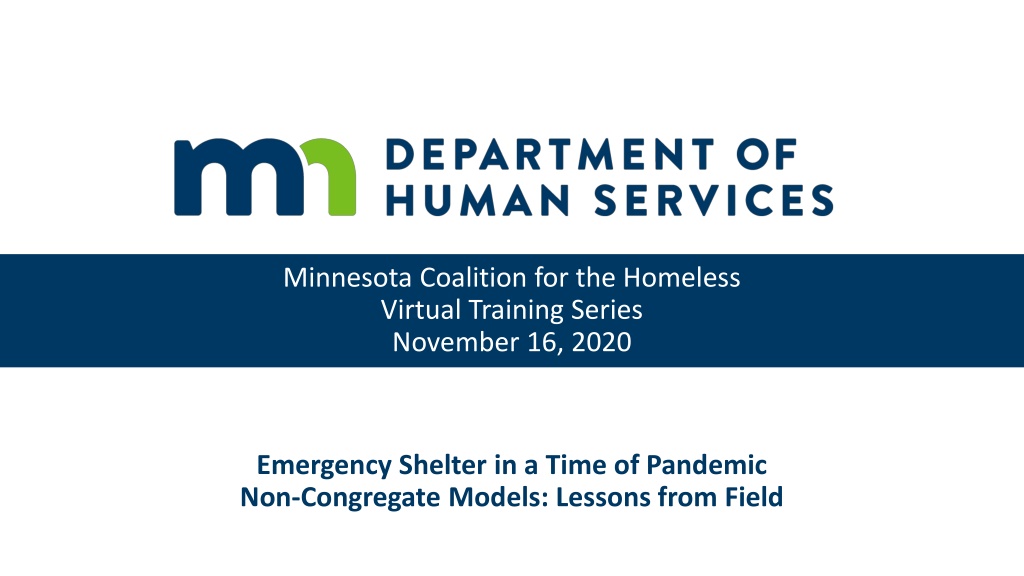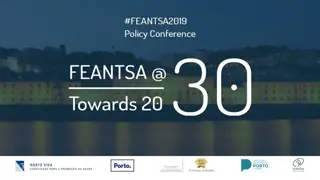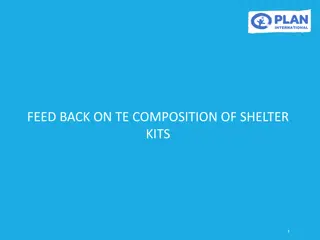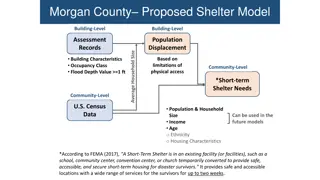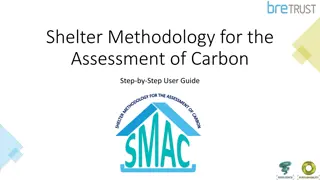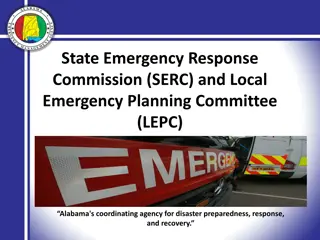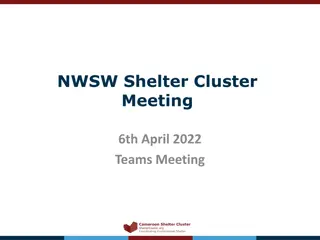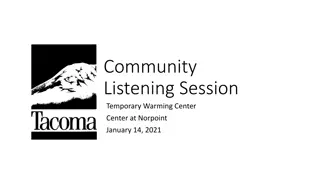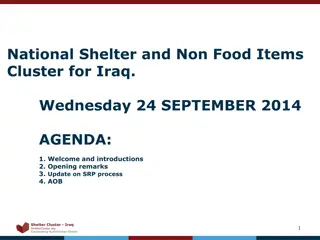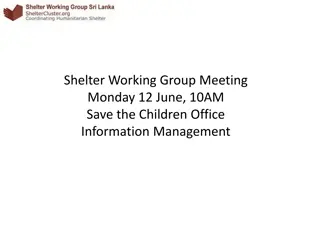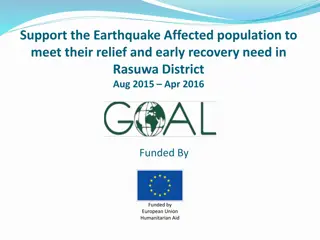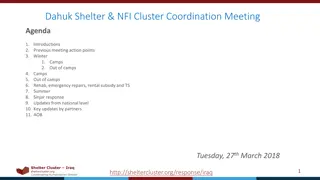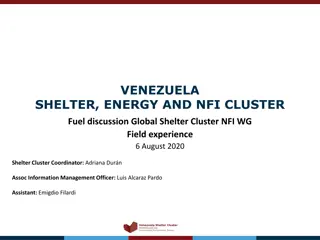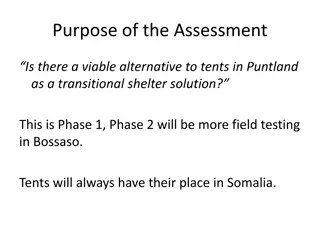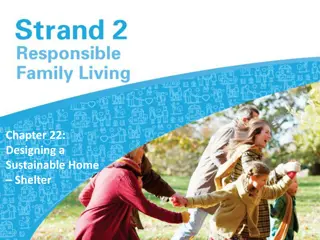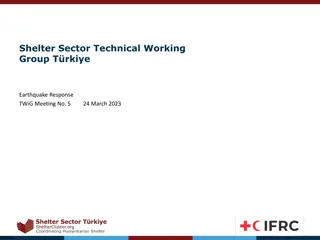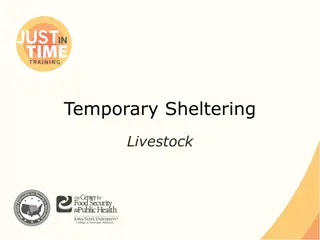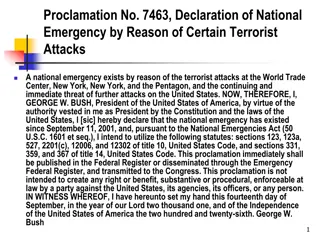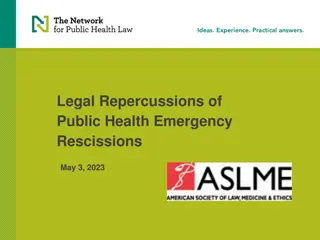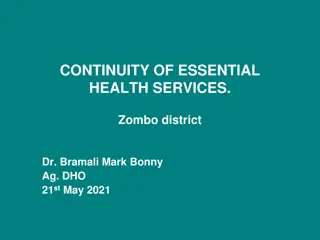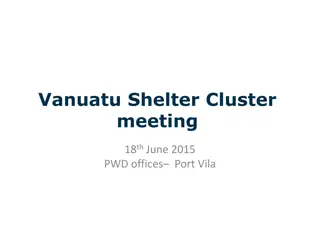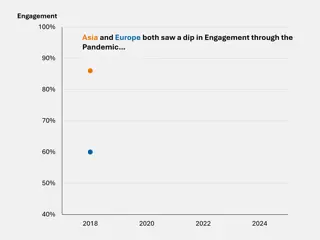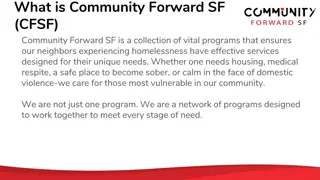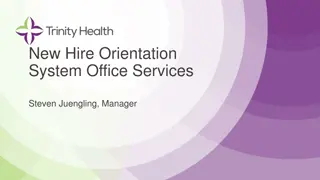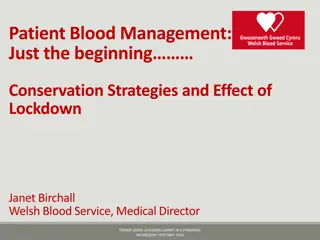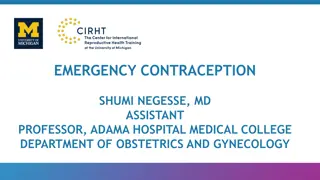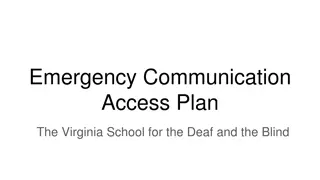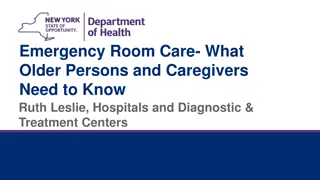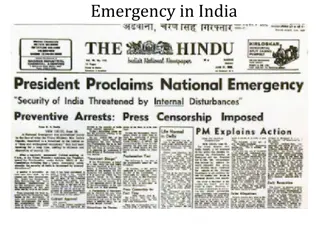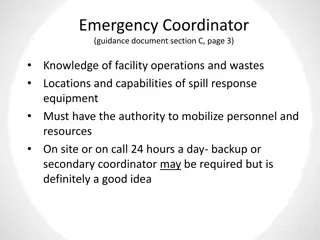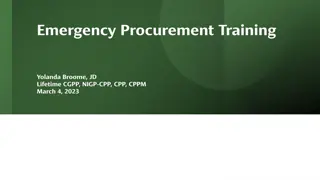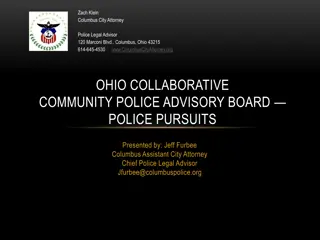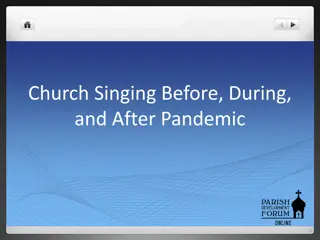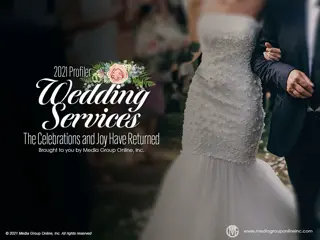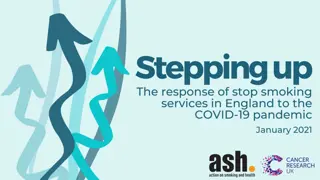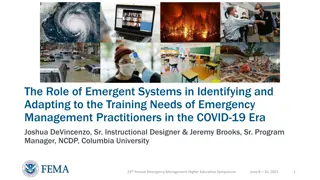Emergency Shelter Strategies in a Pandemic: Lessons and Insights
Explore non-congregate sheltering models and funding strategies for emergency shelters in times of crisis, focusing on the evolving responses to homelessness during the COVID-19 pandemic. Gain insights from panelists and stakeholders involved in innovative shelter solutions, including motel/hotel vouchers and apartment units to provide stability and support to vulnerable populations.
Download Presentation

Please find below an Image/Link to download the presentation.
The content on the website is provided AS IS for your information and personal use only. It may not be sold, licensed, or shared on other websites without obtaining consent from the author. Download presentation by click this link. If you encounter any issues during the download, it is possible that the publisher has removed the file from their server.
E N D
Presentation Transcript
Minnesota Coalition for the Homeless Virtual Training Series November 16, 2020 Emergency Shelter in a Time of Pandemic Non-Congregate Models: Lessons from Field
Workshop Format & Agenda 9:10 DHS Office of Economic Opportunity: Intro and Overview 9:20 Panel Presentation Stepping Stone Emergency Housing: Julie Jeppson & Johnna Krantz Community Action Center of Northfield: Amy Tudor Cornerstone/Joint Shelter-Hotel Project: Denise Eng Red Lake Homeless Shelter: Jordan May 10:00 Audience Questions for Panelists (Q&A Box) 10:15 Panel Discussion: Strengthening Post-Pandemic Shelter 10:28 Closing: MN Coalition for the Homeless 2
Emergency Shelter in a Time of Pandemic DHS Office of Economic Opportunity Normal Times: Awards grants for the following programs: Homeless Youth Act (Street Outreach, Shelter, Transitional Living and Supportive Housing) Transitional Housing Program (THP) Safe Harbor Shelter and Housing / Shelter-Linked Mental Health State Emergency Services Program (ESP) & HUD Emergency Solutions Grant (ESG) Many other anti-poverty and food programs COVID Times: Over $63M in Emergency COVID Response funding (since April 2020) ESP COVID-19 Response Funds Emergency State Appropriation (online survey) Coronavirus Relief Funds (CRF) Shelter and Food Emergency Federal Funding (online survey) ESG-CV1 & CV2 (CARES Act) Outreach, Shelter and Housing Assistance (two RFPs) 3
Emergency Shelter in a Time of Pandemic Non-Congregate Sheltering Normal Times. Typically: $844K/year in State ESP to fund congregate & non-congregate shelter statewide Frequent use of motel/hotel vouchers in areas of MN with no congregate shelter Ave. 2-5 night stays, 1-2 households per hotel, minimal services (sometimes case mgmt.) Emerging Trend: Apartment Units (agency-leased); longer stays/more stability COVID Times: Massive shift to motel/hotel shelter options, in order to: Decompress congregate shelters Quarantine / isolate vulnerable populations or potential COVID-positives Scale up for significant increases in unsheltered homelessness Respond to other 2020 crises (e.g. encampments near Metro area civil unrest) 4
Panelists Perspectives on Non-Congregate Models Stepping Stone Emergency Housing: Johnna Krantz & Julie Jeppson Community Action Center of Northfield: Amy Tudor Cornerstone/Joint Shelter-Hotel Project: Denise Eng Red Lake Homeless Shelter: Jordan May
Johnna Krantz, LSW Program Director, Stepping Stone Emergency Housing Julie Jeppson Executive Director, Stepping Stone Emergency Housing
Anoka County Background & Timing Shelter max 36 residents 4 residents per bedroom 2 quarantine/isolation rooms Hotel currently 33 residents Staff 2 Case Managers (2 FTE) who rotate between the hotel and the shelter 1 Hotel Advocate (.75-1 FTE)
Washington County Contract with Washington County Service provider for 2 hotels Stillwater 26 rooms (32 adults and 11 children) Forest Lake 22 rooms (26 adults and 2 children) Staff 1 Case Manager (1 FTE) 1 Housing Navigator (1 FTE)
Differences between Anoka & Washington Models Intakes/screening Hotel allowing public to reserve rooms Staffing Population served SSEH/County Partnerships
Funding Funding structure for each model Housing Support 10
Lessons Learned Leadership Partnerships/Relationships Communication 11
Amy Tudor, LSW Client Services Manager, Community Action Center of Northfield
Emergency Shelter Units 4 emergency shelter spaces Individual apartment units Serving both families and individuals 2 month stay with periodic review for longer stay Do not exit clients to homelessness Trauma responsive intake process 13
Hotel Vouchers Utilize local hotels on case-by-case basis Risk of hotels saying no or not having room available Intentional work with hotel staff Flexibility
Pros & Cons Increased funding = increased service capacity Ability to provide longer stays More contact and wrap around services Same number of staffing = larger case load Less in person contact during COVID = less trauma responsive Longer stay = more intensive case management needed 15
Denise Eng Project Coordinator, Cornerstone Advocacy Services
Project Collective 9 metro area domestic violence shelters Convened with the help of Violence Free Minnesota Praxis International contracted to help coordinate Funded through ESP $ Offsite housing to meet physical distancing requirements and provide protective housing for: Medically vulnerable Isolation for those with symptoms, suspected or confirmed COVID Quarantine for those exposed to COVID
Considerations in setting up the program The hotel must understand the population you re working with Who else might be housed in the hotel? How will you handle meals? Security concerns in a non-congregate setting
Special considerations for domestic violence Distinction between domestic violence and homelessness Heightened need for confidentiality Need for comprehensive advocacy services Relationships with law enforcement for good or ill
Jordan May Executive Director, Red Lake Homeless Shelter
Sprung Shelter Hotel to Home Project
Contact Information for Panelists Stepping Stone Emergency Housing Cornerstone Advocacy Services Johnna Krantz Denise Eng johnna.krantz@steppingstoneeh.org denise@praxisinternational.org Julie Jeppson Red Lake Emergency Shelter jjeppson@steppingstoneeh.org Jordan May Community Action Center of Northfield jordanmay@redlakenation.org Amy Tudor tudor.amy@communityactioncenter.org
Emergency Shelter in a Time of Pandemic Panel Discussion: Strengthening Post-Pandemic Shelter Q. What did we learn from sheltering during a pandemic that can be applied post-pandemic? Q. How should emergency shelter responses (both congregate and non-congregate) change or be strengthened post-pandemic? Q. What do we gain/lose from longer shelter stays made possible w/ COVID funding? Q. How can emergency shelters and policy makers sustain the increased awareness that the pandemic has brought to the role of emergency shelter in public health and safety. Audience: If you have comments to share on these questions submit in Q&A box. We ll try to incorporate some of them into discussion as time allows
Questions for the Office of Economic Opportunity (DHS)? Thank you! Contact: Katelyn Warburton katelyn.warburton@state.mn.us orIsaac Wengerd isaac.wengerd@state.mn.us
